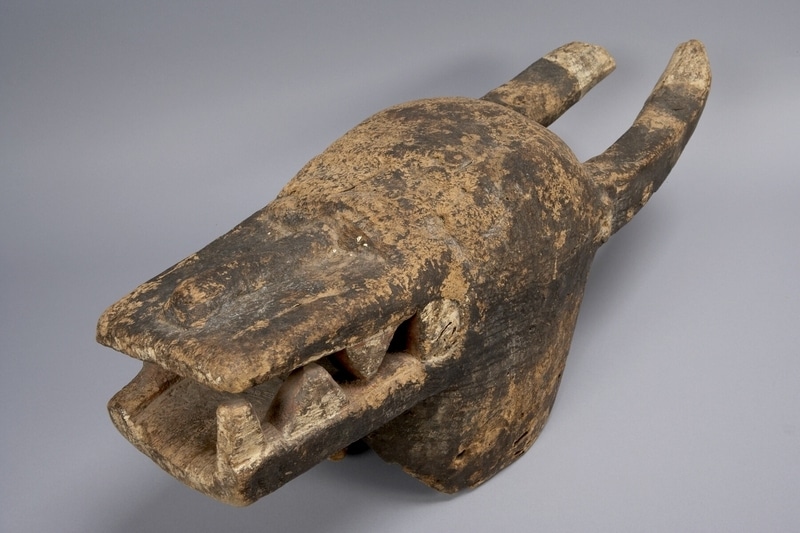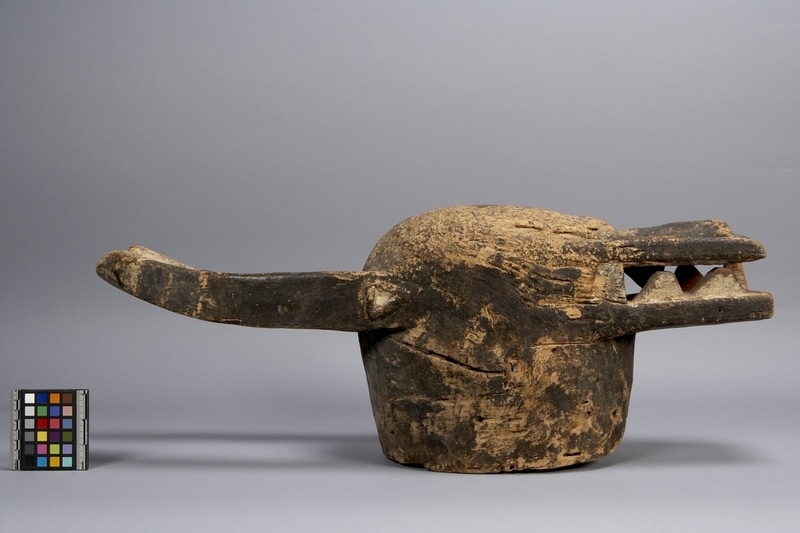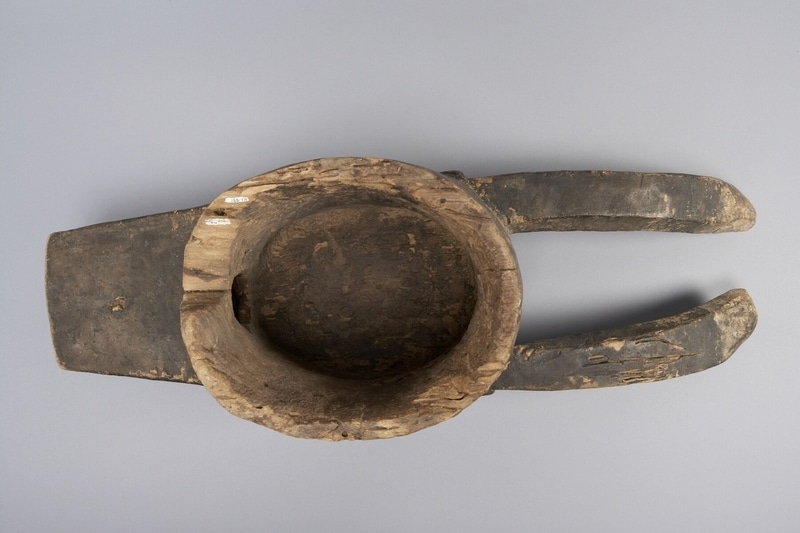Mask Item Number: K2.441 from the MOA: University of British Columbia




Description
Plain surface, brown wood helmet mask in the mixed form of an antelope and hyena. Has horns. Rounded upper face and flat lower face with a nose. Open mouth with two lower teeth on one side and three lower teeth on the other side.
History Of Use
Kponyungo (funeral head masks) are zoomorphic helmet masks that are worn during funerary masquerades by Senior Grade members of a village's Poro society. The masquerades are organized by the Poro society and they serve to honour the dead and ensure continuity between the living and ancestral dead, and to separate the corpse from its spirit (nyui). The nyui is believed to live on after death and must be guided to the village of the dead, where it may be reborn as an ancestral spirit. Should the proper funeral procedures not be observed, the separation will not take place and the nyui will remain in the village and bring misfortune to the descendants of the deceased. The kponyungo masked performer (kporo) often wears a double-membrane barrel drum in addition to a fibre costume. During funerary masquerades, the corpse is sewn into funerary cloths gifted by those with ties to the dead. Once this is done, drums sound from the sacred grove of the Poro to announce the arrival of the kponyungo mask, and which signals that uninitiated persons (women, children, and youth who are not initiated in Poro) must leave the area. The kporo kneels in front of the body and strikes his drum. He then puts the drum on top of the chest of the deceased and strikes the drum three more times. This act separates the deceased’s nyui from the corpse. The kporo repeats his actions the next day, with the body of the deceased replaced by a wooden stick wrapped in cloth.
Iconographic Meaning
The horned antelope is an important symbol of power and magic in Senufo society.
Item History
- Made in Cote d'Ivoire
- Owned by Walter C. Koerner before 1972
- Received from Walter C. Koerner (Donor) during 1972
What
Who
- Culture
- Senufo
- Previous Owner
- Walter C. Koerner
- Received from
- Walter C. Koerner (Donor)
Where
- Holding Institution
- MOA: University of British Columbia
- Made in
- Cote d'Ivoire
When
- Ownership Date
- before 1972
- Acquisition Date
- during 1972
Other
- Condition
- poor
- Accession Number
- 0160/0125